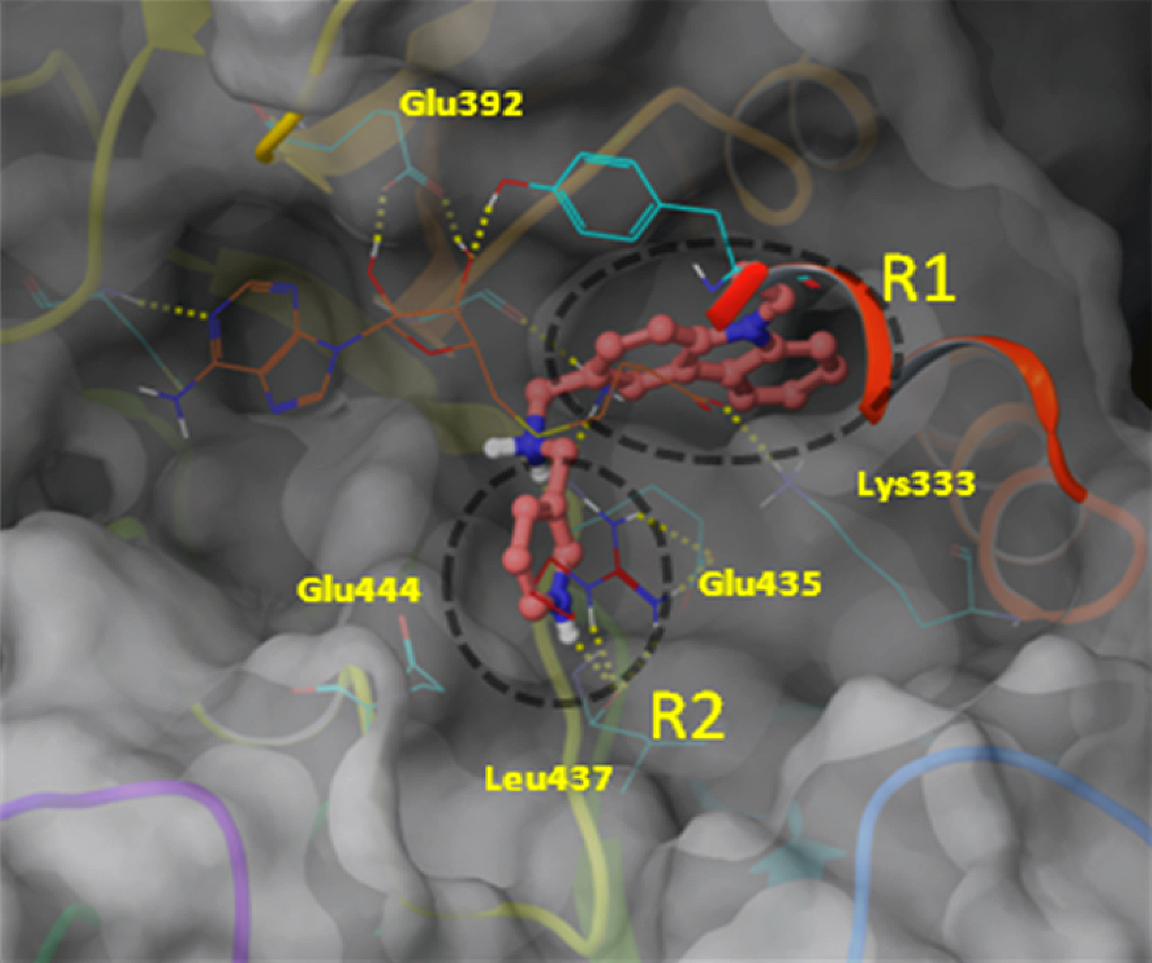An Ohio State University biophysicist is using supercomputer simulations to search tens of thousands of molecular compounds to discover drugs that will block an enzyme that inhibits the human body’s ability to suppress brain tumors.
Chenglong Li, Ph.D., an assistant professor in the medicinal chemistry and pharmacognosy division of the College of Pharmacy, is using computational chemistry to help develop a genetically targeted drug that could surpass current approaches to treating a type of aggressive brain tumor called glioblastoma multiforme (GBM). In contrast to many cancers, the survival outcome of patients diagnosed with a GBM is relatively poor and has improved only marginally over the past several decades.
In general, GBMs are the most common tumors that attack the central nervous system, afflicting nearly 10,000 pediatric and adult patients each year in North America alone. Combinations of surgery, radiation and chemotherapy currently remain the most common therapy for these tumors, yet surgeons often can’t completely remove the highly invasive tumors without causing serious damage to the brain, radiation is rarely effective and chemotherapy usually produces serious side effects.
“My group has been conducting molecular dynamics simulations of the PRMT5 enzyme to gain insights on its catalytic mechanisms in order to understand how to manipulate it effectively and specifically,” said Li. “We then conducted virtual screenings of more than 100,000 pharmaceutical compounds to identify drugs that prevent that enzyme from blocking the body’s cancer suppression genes. This novel approach is called epigenetic cancer therapy, where the identified molecular compounds ‘reawaken’ natural human tumor-fighting genes that stay dormant in many types of cancers.”
Kiran Mahasenan, a graduate student on Li's research team, developed molecular models using the IBM Cluster 1350 system at the Ohio Supercomputer Center, which the team also used to screen drug candidates. The center's flagship supercomputer system, nicknamed the Glenn Cluster, features 9,500 cores, 24 terabytes of memory and a peak computational capability of 75 teraflops.
“For these very important computational approaches, we typically use 32 to 64 nodes of the OSC system,” Li said. “Having access to the OSC supercomputers allows us to run these routines much quicker, which allows us to optimize our results. In addition, very few places in the world have the combination of an NIH comprehensive cancer center and a top-notch supercomputer center like we have here with OSC and OSU’s James Cancer Hospital together.”
Li and his research team represented one of the top user groups of OSC supercomputer cycles in each of the last two years. In earlier research projects, Li’s research team has conducted similar molecular modeling studies to improve treatment for breast cancer, prostate cancer and leukemia, as well as for neurological disorders such as Parkinson’s, Alzheimer’s and autism.
“We are excited that these advanced computational approaches are being more widely used by basic scientists to speed and manage iterations and facilitate the translations of their research to more immediate applications in the clinic,” said Don Stredney, senior research scientist for biomedical applications and director of the Interface Lab at OSC.
Once Li’s research team has identified the most promising drug candidates, they pass along that information to their colleague, Dr. Robert A. Baiocchi, an oncologist at The James. Dr. Baiocchi conducts clinical tests on tissue samples of tumor cells to evaluate the effectiveness, toxicity and dosage of each drug.
The collaborative team recently received notification that the research project will continue with grant funding from the National Institutes of Health over the next two years. Their proposal yields such promise that it scored in the top one percentile of proposals that NIH considered.
___________
The Ohio Supercomputer Center is a catalytic partner of Ohio universities and industries that provides a reliable high performance computing infrastructure for a diverse statewide/regional community. OSC promotes and stimulates computational research and education in order to act as a key enabler for the state's aspirations in advanced technology, information systems, and advanced industries. For additional information, visit http://www.osc.edu
